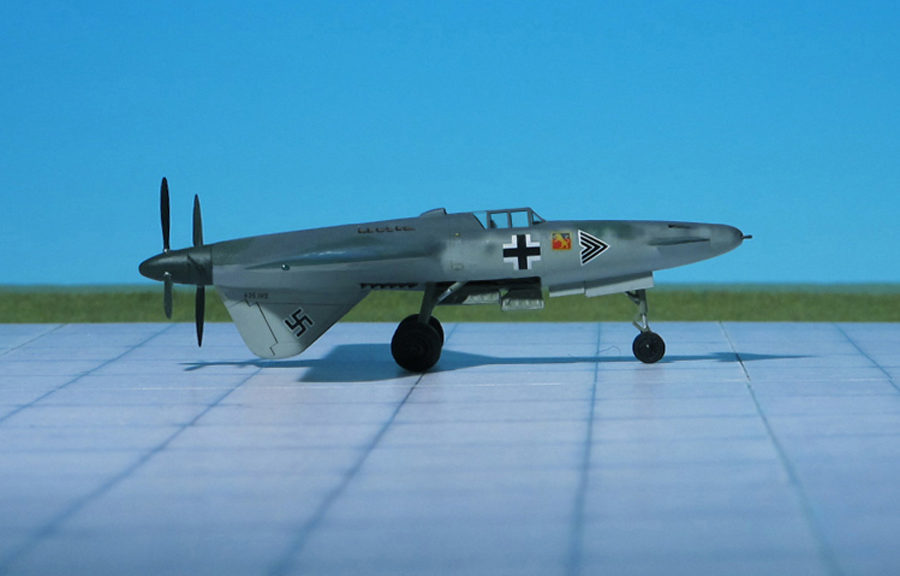TYPE: Fighter, fighter bomber, Project
ACCOMMODATION: Pilot only
POWER PLANT: One Daimler Benz DB 613 liquid-cooled engine, rated at 3,500 hp
PERFORMANCE: 491 mph
COMMENT: In early 1941 the OKL asked for a possible successor for the Messerschmitt Me 110 heavy fighter. Among others the Henschel Aircraft Company proposed a design of a futuristic and unusual configuration. This design, the Hs P.75, featured a tapered fuselage with slightly swept-back wings set back to the rear fuselage of the aircraft and a pair of slightly swept-back canards located on the nose. The widened fuselage housed a powerful engine that drove three-bladed contra-rotating pusher propellers at the rear via an extension shaft. As power unit a Daimler Benz DB 610 engine, which were two DB 605 liquid-cooled engines joined side-by-side, was proposed. These were the same engines that the Heinkel He 177 bomber used and became known for overheating and catching fire. So it was decided to install the Daimler Benz DB 613, in fact two coupled DB 603 liquid-cooled engines, rated at 3,500 hp. A vertical tail unit was mounted beneath the fuselage additionally functioning as a tail bumper and protected the propellers from stroking the ground during take-off. A tricycle landing gear arrangement was chosen and a single pilot sat in the cockpit located about midway along the fuselage. All weapons were mounted in the nose. The advantage of the pusher propeller and the forward canard design was the excellent view of the pilot and concentration of weapons in the nose. The disadvantage would be the engine cooling and the pilot’s safely exit in case of emergency. Although good results were obtained in wind tunnel testing this design was not followed up further.
Notable is the fact that this basic design was realized in several WW II aircraft design such as Curtiss XP-55 “Ascender” and Kyushu J7W1 “Shinden” (Ref.: 17).
















